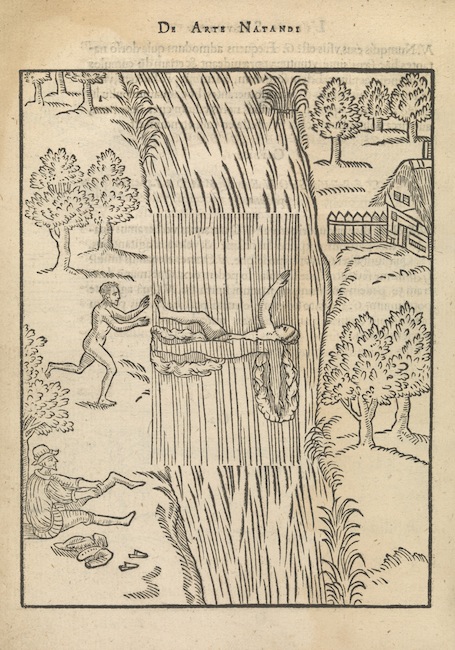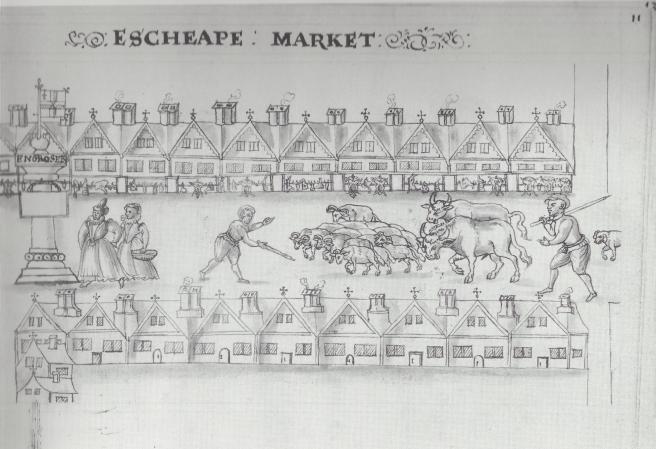Everard Digby, De arte natandi, or Art of swimming (1587).
Out walking I met my friend who calls me the philosophy lady because we have often debated philosophy in the beauty of the woods by the river – he with his dogs, I just out for a stroll, kingfisher-spotting or just happily daydreaming as I go.
I told him about the local open air swimming lake and how I love it, and he told me how he swims across the river with his grandchildren when they visit. I would not do this because I don’t know the currents so he suggested he could accompany me in his kayak as he collects blackberries along the river, and I swim alongside.
It’s a long and happy tradition. For me as a child it was the usual thing for us to swim outdoors, in an unheated outdoor pool or in the river. 17th century writings mention swimming; the tall man in Ramsey in Suffolk swimming with his friends, two boys of St Albans swimming in ‘verolanes ponds’, a young man near Bow on the Essex side of the River Lea, and on September the 13th two young men ‘of the parish of St Dunstans in the west London’, presumably in the Thames (1635, British Library ms Add 21935). However, this could result in drowning. Everard Digby in De arte natandi, or Art of swimming (1587) gives plenty of instructions about how to swim well. Now there is research showing how swimming outside lifts the spirits through biological responses to cold water. A lot of us knew about this empirically all along, though we didn’t know the detailed biomechanics of it. We did it because we liked it, as did those people in the 1630s. Especially with the added pleasures of chlorine-free water, ducklings and goslings alongside, and kingfishers flying overhead with their lovely strange wee-eep! cry. And of course with the happy treat of a cup of tea in good company afterwards, though for those lads in the 1630s it would have been a nice mug of small ale.




